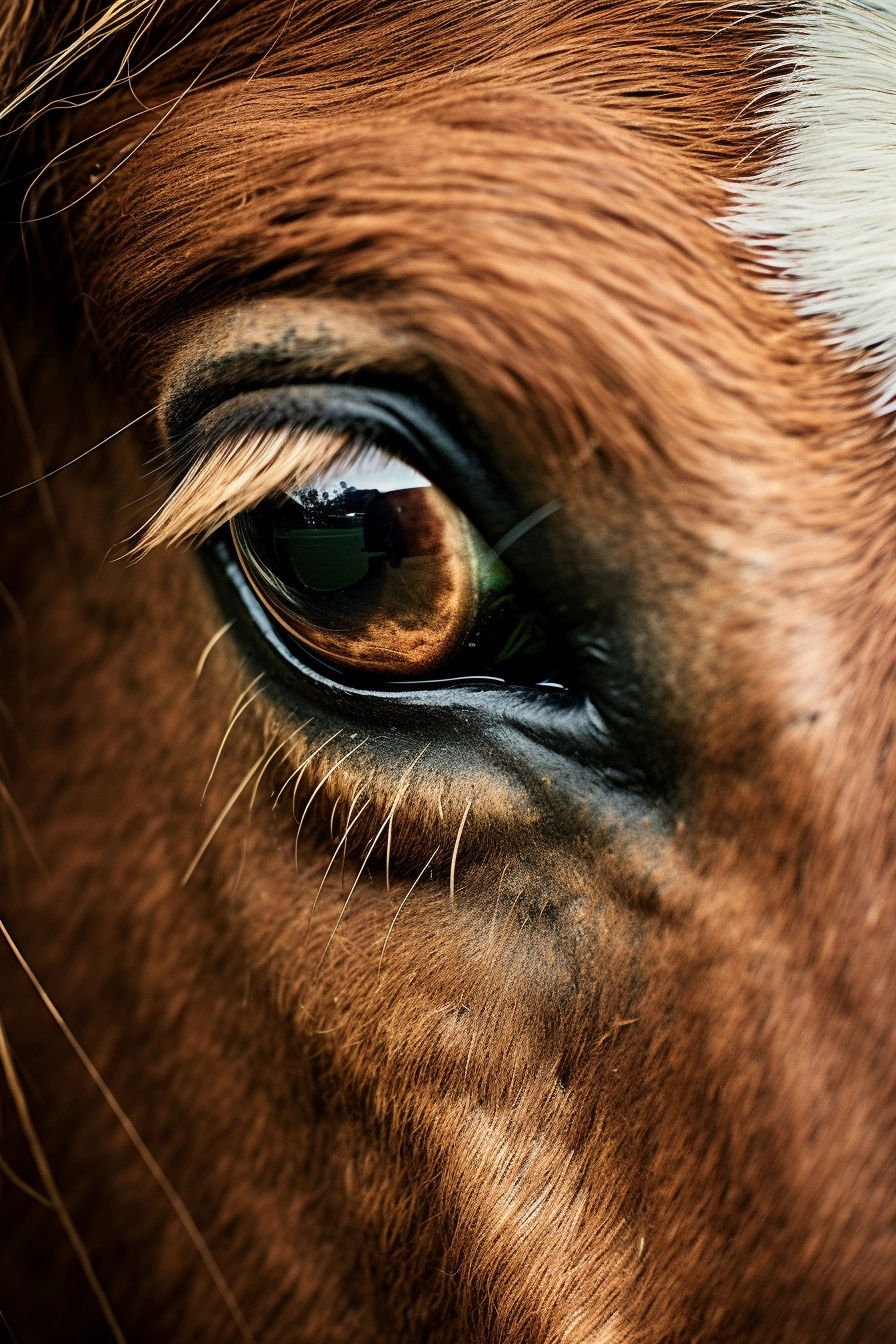
Equine Congenital Heart Disease (CHD)
🧬 Comprehensive Information on Equine Congenital Heart Disease (CHD) for NAVLE Preparation 🐴 Congenital heart disease (CHD) in horses encompasses a group of structural cardiac defects present at birth, resulting from abnormal embryologic development of the heart and great vessels. While some defects remain clinically silent, others can lead to significant hemodynamic compromise, exercise intolerance, failure to thrive, or sudden death in foals and young horses. Common congenital anomalies include ventricular septal defects (VSD), patent ductus arteriosus (PDA), atrial septal defects (ASD), and complex malformations like tetralogy of Fallot. This note provides in-depth knowledge of the embryology, pathophysiology, clinical signs, diagnostic imaging, and management options for equine CHD, tailored to support veterinary professionals preparing for the NAVLE.
Comprehensive Information on Equine Congenital Heart Disease (CHD) for NAVLE Preparation
Definition
Congenital Heart Disease (CHD): A group of malformations present at birth that result from errors during cardiac development, leading to structural and functional abnormalities in the heart of horses.
Etiology
Genetic and Environmental Factors:
Genetic Predisposition: Familial risks have been observed, particularly in Arabians, Welsh Mountain Ponies, and Standardbred horses.
Environmental Factors: Potential teratogens (drugs, toxins, infections) during pregnancy may contribute to CHD development.
Unknown Causes: In most cases, the specific cause remains unidentified.
Pathophysiology
Cardiac Development Errors:
Septation Defects: Errors in the septation of the heart chambers and great vessels can lead to various forms of CHD, such as ventricular septal defects (VSD) and atrial septal defects (ASD).
Abnormal Cardiac Looping: Affects the right-left orientation of the heart, leading to heterotaxy syndromes (e.g., situs inversus).
Persistent Fetal Circulation: Failure of normal closure of fetal shunts (e.g., patent ductus arteriosus [PDA]) can result in postnatal complications.
Clinical Signs
Foals:
Failure to Thrive: Poor growth and development.
Respiratory Distress: Dyspnea and cyanosis.
Heart Murmurs: Often the first indication of CHD, typically detected on auscultation.
Nonspecific Signs: May include syncope, exercise intolerance, or sudden death.
Adult Horses:
Heart Failure Signs: Due to chronic volume overload, including jugular venous distension, subcutaneous edema, and respiratory distress.
Arrhythmias: Potential complication in horses with CHD.
Syncope: Due to inadequate cardiac output.
Specific Forms of Congenital Heart Disease
Ventricular Septal Defect (VSD):
Most Common Form of CHD in horses.
Types: Perimembranous, muscular, and doubly committed (juxtaarterial) VSDs.
Clinical Signs: Left-to-right shunt, heart murmur, left atrial and ventricular enlargement, pulmonary overcirculation.
Prognosis: Dependent on defect size and concurrent anomalies. Defects larger than 2.5 cm or involving significant hemodynamic compromise have a worse prognosis.
Atrial Septal Defect (ASD):
Less Common: Leads to a left-to-right shunt, volume overload of the right atrium and ventricle, and pulmonary overcirculation.
Types: Primum, secundum, sinus venosus, and coronary sinus ASDs.
Clinical Signs: Typically associated with a heart murmur and may present with signs of right heart failure in severe cases.
Patent Ductus Arteriosus (PDA):
Failure of Ductus Arteriosus Closure: Leads to continuous left-to-right shunting, pulmonary overcirculation, and heart failure if untreated.
Clinical Signs: Continuous "machinery" murmur, detected at the left heart base, and signs of left-sided heart failure.
Treatment: Surgical ligation or interventional occlusion is recommended.
Tetralogy of Fallot (TOF):
Four Components: Right ventricular outflow tract obstruction, VSD, right ventricular hypertrophy, and an overriding aorta.
Clinical Signs: Cyanosis, exercise intolerance, and heart failure due to right-to-left shunt.
Prognosis: Poor without intervention; affected foals often have a limited lifespan.
Atrioventricular Septal Defect (AVSD):
Incomplete Septation: Results in a primum ASD and VSD, with a single atrioventricular valve.
Clinical Signs: Heart failure due to significant left-to-right shunting and valve regurgitation.
Prognosis: Poor, particularly in cases with severe valve involvement.
Double Outlet Right Ventricle (DORV):
Both Great Vessels Arise from the Right Ventricle: Often associated with VSD, resulting in varying degrees of cyanosis and heart failure.
Clinical Signs: Dependent on the degree of pulmonary blood flow and shunt direction.
Valvular Dysplasia:
Malformed Valves: Can lead to stenosis or regurgitation, particularly affecting the atrioventricular or semilunar valves.
Clinical Signs: Heart murmurs, arrhythmias, and heart failure due to volume overload.
Prognosis: Variable, dependent on the severity of the malformation.
Vascular Ring Anomalies:
Abnormal Vascular Structures: Compress the esophagus or trachea, leading to dysphagia or respiratory distress.
Common Type: Persistent right aortic arch (PRAA).
Treatment: Surgical correction is necessary for resolution.
Diagnostics
Auscultation: Detection of heart murmurs, often the first clue to CHD.
Echocardiography: Gold standard for diagnosing specific CHD, assessing shunt direction, chamber sizes, and associated lesions.
Radiography: May reveal cardiac enlargement and pulmonary changes due to volume overload.
Electrocardiography (ECG): Useful for identifying arrhythmias.
Treatment
Medical Management: Primarily supportive, aimed at managing heart failure and arrhythmias.
Surgical Intervention: Indicated for certain defects, such as PDA, VSD, or vascular ring anomalies, though rarely pursued in equine practice due to the complexity and risk.
Prognosis
Dependent on Defect: Simple defects with minimal hemodynamic impact may allow for a normal lifespan, while complex or large defects often carry a poor prognosis.
Complications
Heart Failure: Due to chronic volume or pressure overload.
Arrhythmias: Resulting from structural abnormalities or myocardial remodeling.
Sudden Death: Possible in severe cases of CHD, particularly those with right-to-left shunting.
References:
Bonagura, J. D., Reef, V. B., & Schwarzwald, C. C. (2019). Congenital heart disease in foals and adult horses. Veterinary Clinics of North America: Equine Practice, 35(1), 27–56.

Do you have any feedback about the NAVLE Note?
We'd love to hear from you!
Feel free to send us a message
Don't forget to share with any friends who are also
preparing for the NAVLE Test.








